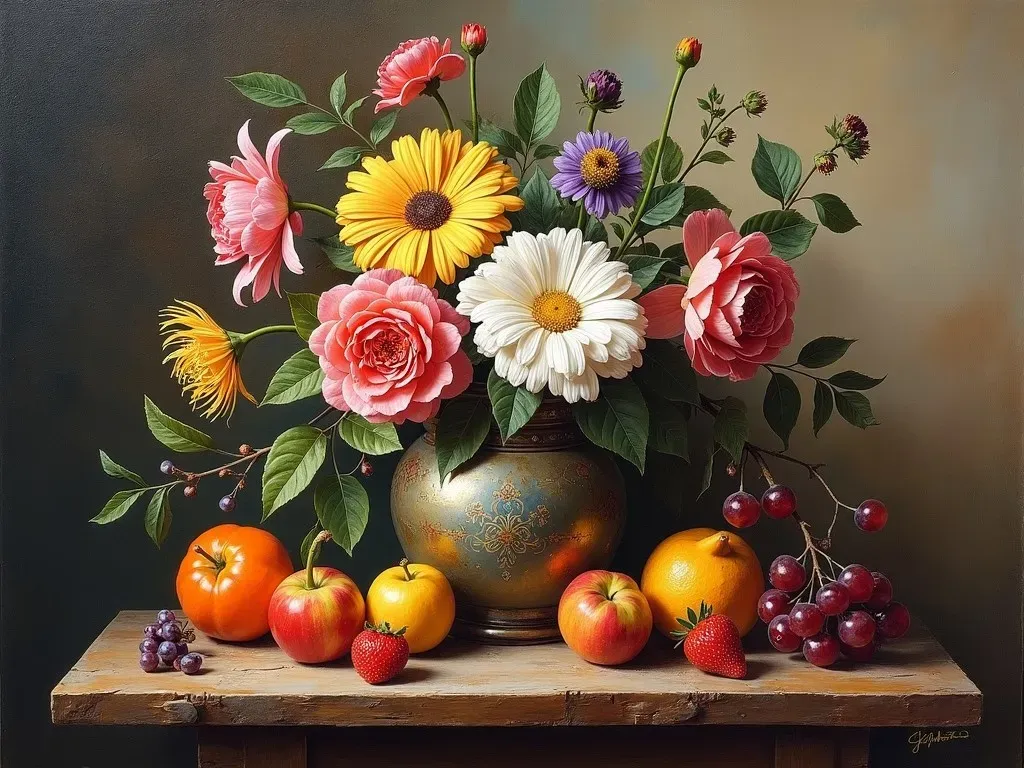Seed keyword: oil painting still life
Keywords: still life oil
Oil painting still life is a captivating genre of art that focuses on inanimate subjects, typically featuring everyday objects such as fruits, flowers, and household items. This art form allows artists to showcase their technical skills and creativity while providing viewers with a ray of beauty captured in static objects.
Understanding Still Life in Oil Painting
The term still life is derived from the Dutch word "stilleven," which means "quiet life," and it has emerged as a significant genre within the realm of painting. Oil painting still life has a rich history that dates back to ancient civilizations, but it reached new heights during the Renaissance period when artists like Caravaggio and Jan Davidsz de Heem portrayed stunning arrangements that featured an interplay of light and shadow, rich colors, and intricate details.
Characteristics of Oil Painting Still Life
- Composition: The arrangement of objects is crucial in still life paintings. A well-composed piece draws the viewer’s eye and encourages them to explore every detail.
- Color Palette: Oil paints offer a vast range of colors, which artists exploit to create vibrant and emotive scenes. A limited palette can also be effective for artistic cohesion.
- Lighting: Understanding how light interacts with objects adds depth and realism. Artists often use chiaroscuro to accentuate features and create a three-dimensional effect.
- Textural Variation: The unique quality of oil paints allows for smooth blending or heavy texture, adding to the overall dynamics of the painting.
Essential Supplies for Oil Painting Still Life
Before you embark on your still life oil painting journey, ensure to gather the following materials:
| Material | Purpose |
|---|---|
| Canvas or Panel | Surface for painting |
| Oil Paints | Various colors |
| Brushes | Different sizes for detailing |
| Palette | Mixing colors |
| Palette Knife | For mixing paint and creating texture |
| Rags or Paper Towels | For cleaning brushes and hands |
| Easel | To support your canvas |
| Odorless Solvent | For thinning paint and cleaning |
| Varnish | To protect your finished painting |
Facts and Figures Related to Still Life Painting
- Historical Significance: The still life genre became prominent during the Renaissance, with Dutch painters leading the way in this depiction of everyday objects.
- Proportion of Art Sales: Still life paintings represent approximately 15% of total art sales in galleries, indicating a sustained interest from collectors.
- Global Popularity: While Central and Western European countries are well-known for their still life tradition, contemporary artists worldwide continue to contribute to this genre, adding diverse influences and styles.
Step-by-Step Guide to Creating Oil Painting Still Life
Here’s a simple yet effective step-by-step tutorial to help you create your own still life masterpiece.
Step 1: Choose Your Subject
Select items that inspire you, such as fruits, flowers, or kitchen utensils. Arrange them thoughtfully to create a compelling composition.
Step 2: Prepare Your Canvas
Gesso your canvas to create a smooth surface for painting. Let it dry completely before proceeding.
Step 3: Sketch Your Composition
Lightly sketch the outline of your objects using a pencil or charcoal. Pay attention to proportions and perspective.
Step 4: Underpainting
Begin with an underpainting using a monochromatic color palette. This establishes values (light and dark) and helps in judging colors later.
Step 5: Layering Colors
- Base Layer: Start with a base layer of the main colors in your composition.
- Add Details: Gradually build up layers, adding highlights and shadows to create depth.
- Mixing: Use a palette knife to mix your colors, focusing on harmonious blends.
Step 6: Final Touches
Incorporate textural details and adjust colors as necessary. This is where the painting really comes alive.
Step 7: Drying and Varnishing
Allow your work to dry completely before applying a final varnish layer. This enhances colors and provides protection.
Additional Tips for Success
- Experiment with Styles: Explore different styles such as realism, impressionism, or abstract to find what resonates with you.
- Practice Regularly: Like any skill, practice is essential. Set aside time each week to create new still life compositions.
- Utilize Online Resources: Consider online tutorials and classes such as those available on Art Ignition and YouTube channels dedicated to oil painting.
FAQ
Q: What types of subjects can I use for a still life painting?
A: You can use any inanimate objects, including fruits, flowers, books, and kitchen utensils. The key is to choose items that interest you and can be arranged in an appealing way.
Q: Do I need a lot of experience to create still life paintings?
A: Not at all! Start with simple objects and gradually work your way up to more complex arrangements. Painting is a learning process.
Q: How do I choose my color palette?
A: A limited palette is a good starting point. Select a few primary colors and mix them to create a cohesive look throughout your painting.
Q: How can I improve my skills in oil painting?
A: Regular practice, studying the works of renowned artists, and seeking feedback from fellow artists can greatly enhance your skills.
Q: What is the best way to clean my brushes after oil painting?
A: Use an odorless solvent to clean your brushes thoroughly, ensuring no paint residue remains. Follow up with soap and water for a final cleanse.
With diligence and creativity, you can master the art of oil painting still life. Each painting offers a unique opportunity to express your vision while honing your skills as an artist. Dive in, explore, and enjoy the journey of transforming still objects into vibrant works of art.
